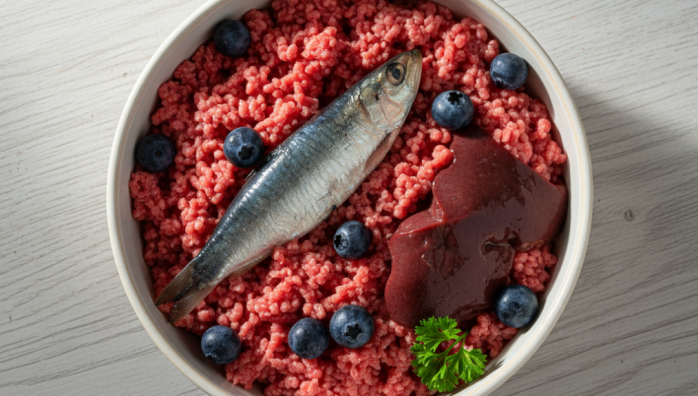Balancing Nutrients in a Raw Pet Diet
by admin in Pet Care Basics 17 - Last Update November 21, 2025

When I first ventured into the world of raw feeding, my biggest fear wasn\'t handling raw meat or my dog not liking it. It was the overwhelming thought: \'Am I going to mess this up and make my best friend sick?\' The internet was a swirl of conflicting ratios, complex spreadsheets, and dire warnings about nutritional deficiencies. Honestly, it was paralyzing. But after years of research, trial, and error with my own dogs, I\'ve learned that balancing a raw diet is more about understanding core principles than being a math genius.
The foundation: my \'aha\' moment with the 80/10/10 rule
The breakthrough for me was grasping the concept of a \'prey model\' diet, often simplified as the 80/10/10 guideline. This isn\'t a rigid, daily law but a fantastic starting point that mimics the composition of a natural prey animal. It helped me move from panic to a plan.
80% muscle meat
This is the bulk of the diet and the primary source of protein, amino acids, and B vitamins. I think of it as the \'engine\' of the meal. It includes things like ground beef, chicken thighs, turkey chunks, and even heart, which is technically a muscle. I quickly learned that variety is crucial here to provide a wider range of amino acids.
10% raw edible bone
This was the scariest part for me initially. But raw bones are soft, pliable, and the most natural source of calcium and phosphorus. I started with softer bones like chicken wings and duck necks. This component is non-negotiable for firm stools and strong skeletal health. Never, ever feed cooked bones.
10% organ meat (with a catch)
This is the nutrient-dense powerhouse of the diet. Think of organs as nature\'s multivitamin. However, half of this 10% (so 5% of the total diet) should be liver, which is rich in Vitamin A. The other 5% should be other secreting organs like kidney, spleen, or pancreas. My biggest mistake early on was giving too much liver at once, which resulted in some very loose stools. A little goes a long way!
Going beyond the basic ratio
Once I got comfortable with the 80/10/10 foundation, I started learning about the nuances that take a good raw diet and make it great. This is where I feel I fine-tuned things for my pets\' individual needs.
The role of healthy fats
Omega-3 fatty acids are vital for reducing inflammation and supporting skin, coat, and joint health. While some meats are fatty, I found that adding a source like oily fish (sardines, mackerel) or a high-quality fish oil a few times a week made a visible difference in my dog\'s shiny coat.
A small splash of green
While not strictly necessary in a prey model diet, I choose to add a small amount of finely puréed, pet-safe vegetables and a few berries. I see it as a source of antioxidants and fiber. My dogs love a little bit of blended kale or a couple of blueberries mixed in.
My single most important lesson: variety over daily perfection
My biggest piece of advice is to stop trying to make every single meal perfectly balanced. It\'s impossible and will drive you crazy. Instead, aim for balance over time, just like we do with our own diets. I rotate through at least three different protein sources (like beef, chicken, and lamb) over the course of a week or two. This ensures a much broader spectrum of nutrients. One week might be slightly higher in one thing, the next week in another. It all balances out.
A final thought from my experience
Switching to raw feeding was one of the best decisions I ever made for my pets, but it\'s a journey. Start slow, don\'t be afraid to ask questions, and trust your instincts. The vibrant health, clean teeth, and boundless energy you\'ll see are worth the initial learning curve. And of course, while I\'m sharing what has worked wonders for my pack, I always recommend having a conversation with a trusted, pro-raw veterinarian to ensure the plan is right for your specific pet\'s needs.














